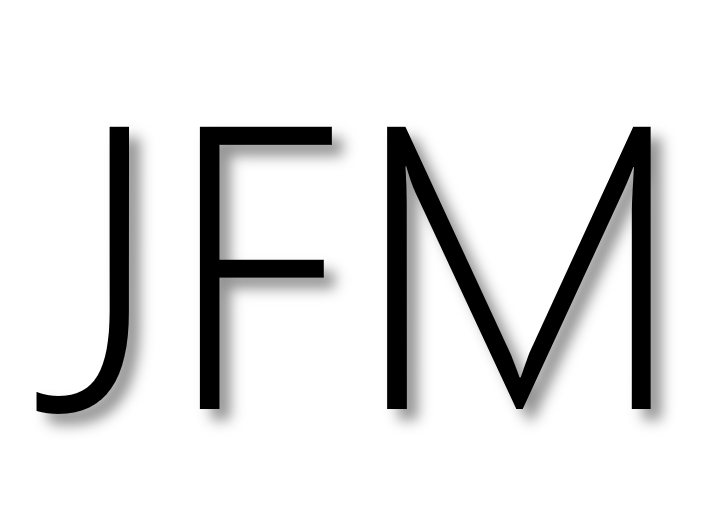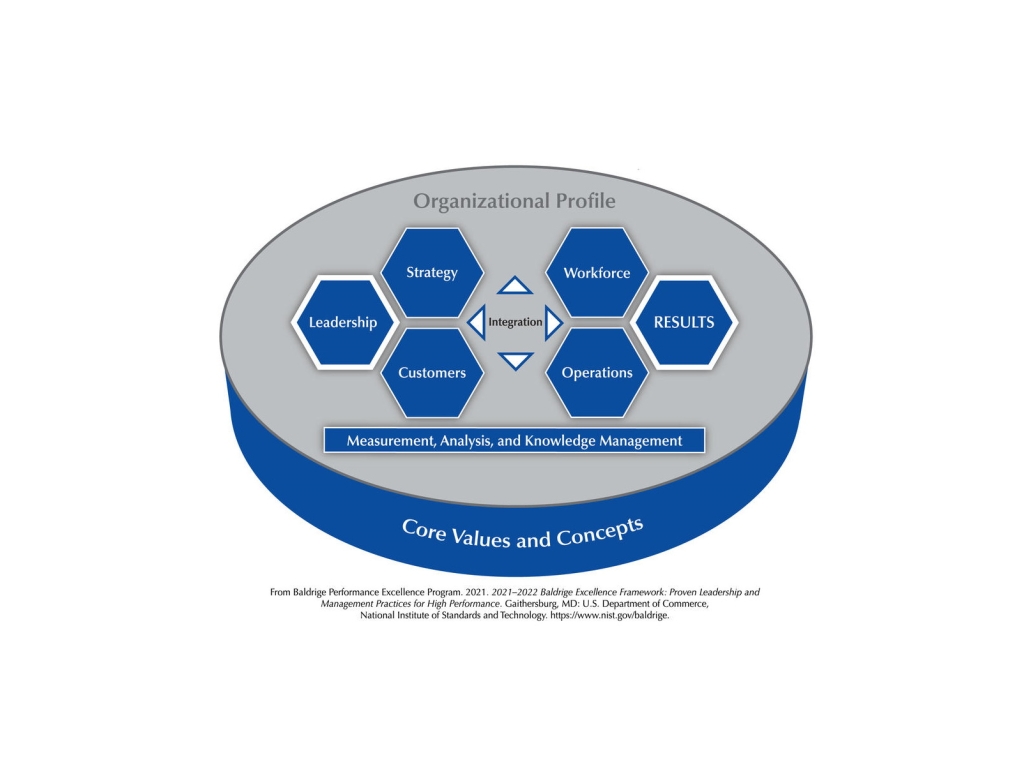We’re not all corporate CEOs, founders, or even senior leaders in positions to implement the key principles of the Baldrige Excellence Framework, but many of us lead projects or smaller initiatives that require planning and strategy, even if we don’t lead the whole organization.
A detailed review of the framework is highly recommended, but here are some thoughts on how the 7 major elements of the framework might apply to your projects, or at least how I see them applying to mine. Read on and please share your feedback or experiences.
Before we dive into the framework details, let’s quickly consider that the framework recommends starting with an organizational profile, which we’ll reference as a project profile.
The Project Profile
Like the organizational profile, a project profile needs to define much of the “what” and “why” of the project. Working “within” the bounds of the project, what are you trying to accomplish in specific, measurable terms; and why is this project important to its various stakeholders from customers to leaders to project team members?
Shifting focus, viewed from “outside” the bounds of the project, the profile also must outline the environmental factors generally outside the control of the project. These factors may include the organizational requirements, culture, and strategic objectives that align to the project’s purpose and success impacts. They may also outline the legal requirements or governmental regulations that govern how the project is to be conducted or constrained.
The profile should clearly document what resources are available to a project — from time to funding to staffing, specific skills, base technologies or intellectual property, tools, and facilities. Project risks often stem directly from resource limitations, so be mindful of this later on.
Of course, the profile should describe how decisions will be made. Whether by a single project leader or a collaborative team, it is critical that the decision chain for a project be clear and well understood by all project players — all stakeholders. Everyone should know who will make key decisions and how information will be shared to support those decisions.
Next, the project profile should recognize that its success may depend on other organizations, partners, suppliers, or even customers to achieve complete success. These dependencies and the definition of these relationships should be clear to everyone on the project so that everyone on the team knows how the work is being divided and shared across the list of stakeholders.
Finally, if your project is competing with other projects in your own or other organizations, this needs to be clearly stated and the strategy to protect or differentiate your project’s efforts should be described. The means for recognizing and handling intellectual property developed during the project, part of the knowledge base framework element, will need to be clearly defined to avoid any mishandling or inappropriate leakage.
The Framework Elements
Let’s move on to the individual components of the Baldrige framework viewed now from the perspective of the project leader or collaborative team, a structure itself being one of the critical elements.
LEADERSHIP
Project leaders or collaborators will need to make clear the vision for the project and to infuse that vision into the words and other communications used throughout the project. Even if the vision is simply a flow-down from outside the project, that is fine; however, leaders should work to make the vision specific to the project at hand to allow team members to feel the connection between the project’s activities or successes and the vision. Safe, legal, and ethical performance should be the clear standard of performance in all the ways that may apply directly to the project. And of course, project leaders should, if appropriate, point out the ways that success for the project will bring about a better society or environment.
Regular communications are a cornerstone of all good projects and collaborations, so be clear what and when communications will be used through the project.
And team members must hear how leadership will be supportive of their and the project’s success through their own actions. Leaders should be clear about their sense of urgency and the need for action to address work requirements and the inevitable challenges that arise in every project.
Finally, and again, connecting the project’s success to outside interests helps build cohesion and purpose into the team. Efforts should be made to draw these connections through leadership communications.
STRATEGY
The strategy must clearly state the projects key deliverables and quality or performance standards; however, this section of the plan should also address “how” the work will be accomplished, including how the team and stakeholders will collaborate to define that “how”. It is critical that all team members and stakeholder feel a part of the project success and no measure of that feeling is stronger than when members feel a role in structuring the work to be performed.
None of us are mushrooms, being dumped on by leaders simply seeking our work output. We work better, much better, when we have been engaged in the work we are doing and invited to bring our whole selves to the project’s success. This engagement includes not only the acceptance of creativity, but how creativity will be invited and supported in performing the project, so the project should be clear how creativity and innovation will be a part of the “how” of this project.
Workflow and communicating project progress also needs to be part of the strategy, including the specific tools, increasingly digital, that will be used across the entire project ecosystem. Breakdowns in workflow and communications are part of the hallmarks for failed projects, so get these issues laid out early, with plans for updating when needed.
Before concluding this element, we can’t forget that many of the key project management elements should be a part of the strategy. There should be clear references to the statement of work, project schedule, budget or other resource allocations with forecasts, triggers, and tripwires necessary to measure progress and milestone achievement. As appropriate, specific team members can be identified where resources or responsibilities dictate a clear role. No one should wander around wondering how they can help the project be successful.
And, finally, the strategy should openly acknowledge the risks and opportunities that are potential with assignments and responsibilities to monitor for and report unforeseen events.
CUSTOMERS
Every project has them, whether the customer is paying the bills today or may be paying for the products generated downstream, it is important for the project to recognize that its requirements and ultimate measures of success start and end with the customer. Who, when, where, and how that customer will be engaged is critically important to the overall, long term project’s success?
The customer should be clearly identified, including segmentation if necessary. Your team should have access to as much information about the customer’s needs as possible through communications and research. A foundation of creativity is a personal, internalized understanding of the customer’s problem, the solution for which IS this project, so the more personal the customer can be made in the eyes of the project team the better.
The project should have clearly defined methods for engaging and obtaining feedback from the customer at a frequency that is probably more often than expected. Customers are human and they see your project differently at different times. Frequent communications allow for the nuanced feedback that will lead to the highest level of success for them and for the project.
But the team should be mindful of changes, the bane of everyone project manager. Systems should be in place to identify and manage change from any source, including the customer.
MEASUREMENT, ANALYSIS, AND KNOWLEDGE MANAGEMENT
This framework element is almost self-explanatory but let’s make sure that our projects are clear and specific to the tasks in how they will measure work progress, quality, and resource utilization, how independent analysis will be used to verify and validate that the results of the project are both right and aligned to the project requirements. Teams should know how, where, and how often they should make deposits into the project data repositories that will serve to guide the overall project.
And because every project generates some form of knowledge, team members should be coached on how that knowledge will be stored, managed, and shared so that everyone benefits appropriately from the project’s activities. This includes documenting successes and failures sufficient to capture learning for members or future project teams.
If the project includes a continuing level of production or service, there should be measures and procedures for implementing continuous product or process improvement. Guidance may also be included for piloting various potential improvements prior to “production” implementation.
WORKFORCE
Though it might seem that this section of the plan would focus on human resources quantitatively, which it does, the real focus is on the quality of the work environment and making sure that all team members have the resources themselves and the supports to be engaged in the project and to perform their best. In addition to identifying team members for specific skills, project leaders should also consider and support diversity across a range of measures to bring the best and most creative perspectives to the project’s goals.
In addition to assessing how much work is available or can be accomplished across the team, including how changes in team membership will be handled, it is equally important to assess how team members will be kept safe, secure, and enabled where accessibility is a factor.
Team members are humans, and they want to know how they will benefit personally from project success through various benefits or opportunities. Feedback is key. To use the bowling analogy, “showing them the pins”, as in showing members direct results for their efforts, raises engagement and, as in bowling, excitement for progress and success.
Finally, the whole team needs to know how they will be assessed for their performance or contributions to the project’s success. With clear rules, including measures for collaboration and cultural support, the team can perform knowing that every member is truly “on the same team.”
OPERATIONS
This section refers to the specific work processes and procedures needed to product quality, whether it be an R&D project or producing a widget. Every organization follows certain product or process standards that must be documented, checked, updated, validated, and utilized to perform and measure work output.
If not defined outside the project, the team may need to define new product or process standards it will use to perform or measure its work outputs.
This section is also where key supply-chain elements will be defined in a way that the collective work of suppliers, partners, and other collaborators will be integrated together to form a whole, complete project outcome.
And if not already addressed above, processes for managing change, creativity, risks, and innovation should be clearly laid out here.
Finally, embedded within the performance standards should be the direct measurements feeding the data analysis and the efficient use of resource to produce a quality product or service performance.
RESULTS
Last, but certainly not least, are the results. At 45% of the total score for an organizational assessment, results are the most significant element of the Baldrige framework, and they must be the same for your project.
Closing the loop from customer requirements to customer satisfaction are the means for how your project knows its complete and how it knows it has met the customer’s needs.
How will your team know, and with what confidence, that they have performed to the customer’s expectations with the best use of resources in consideration for all of the internal and external constraints and requirements.
This section is the total wrap-around encompassing all stated, and sometimes unstated, requirements for the project. This is where measures, data, and analysis put in place at the beginning of the project will either show their worth or will show the glaring issues needed.
The ultimate goal is a clear measure of customer satisfaction with emphasis how well the customer is engaged in the results of the project. Does the customer feel the benefits of a successful project, whether in their wallet or in their hearts?
And lest we forget, how did the team feel about the project’s conclusion? Were they empowered to do their best work? Did they build their own capacity or the capacity of the organization for future projects? Did the project build up the cultural strength and did the leadership grow in their strength and capability, as well?
Finally, and because this discussion is for a project WITHIN a larger organization, did that organization recognize the benefits of this project that were aligned to its strategic goals?
Wrapping It Up
As they note in their framework guide, and I’m quoting, the Baldrige Criteria are built on the following set of interrelated core values and concepts:
- Systems perspective
- Visionary leadership
- Customer-focused excellence
- Valuing people
- Organizational learning and agility
- Focus on success
- Managing for innovation
- Management by fact
- Societal contributions
- Ethics and transparency
- Delivering value and results
Each of these values and concepts easily apply at a project team level and team members and leaders are better for considering them in developing project plans.
This evaluation only touches on the surface of all the considerations highlighted in the full Baldrige Excellence Framework and project managers are strongly advised to become familiar with the full framework for both project leadership and future leadership roles.
Who knows? If we grow great project managers, maybe we’ll grow great organizations, too.
Do you have your own ideas on the use of the Baldrige Framework for project management? Drop a comment below.


